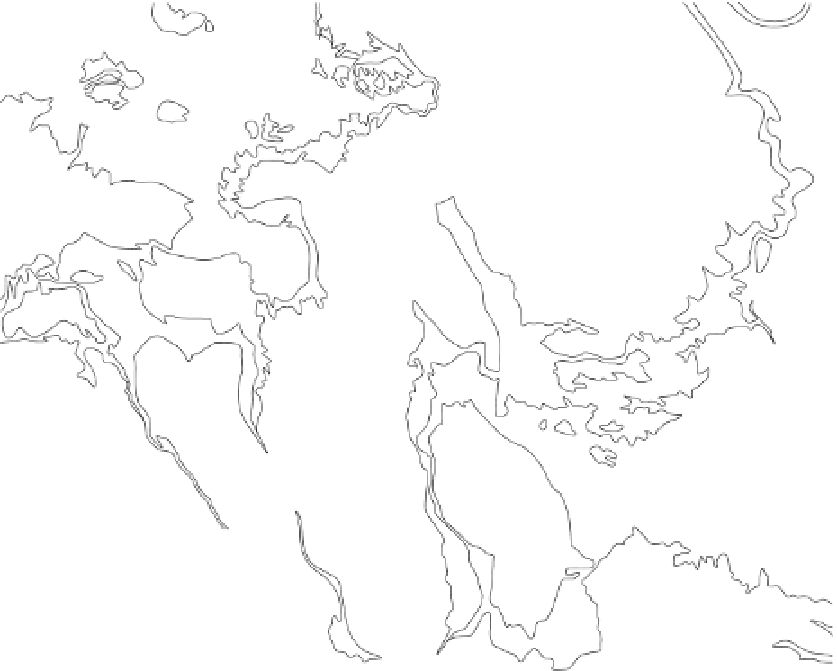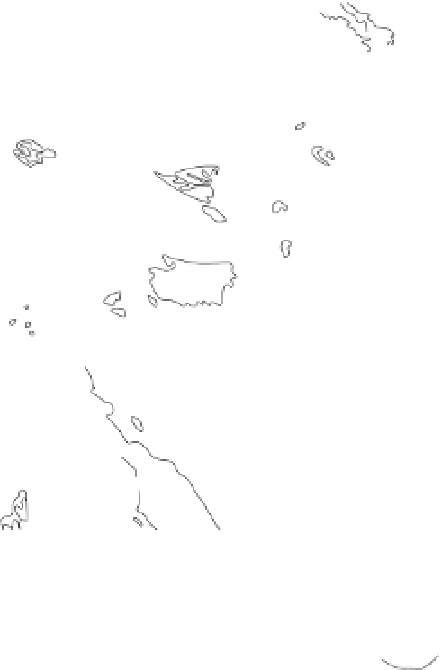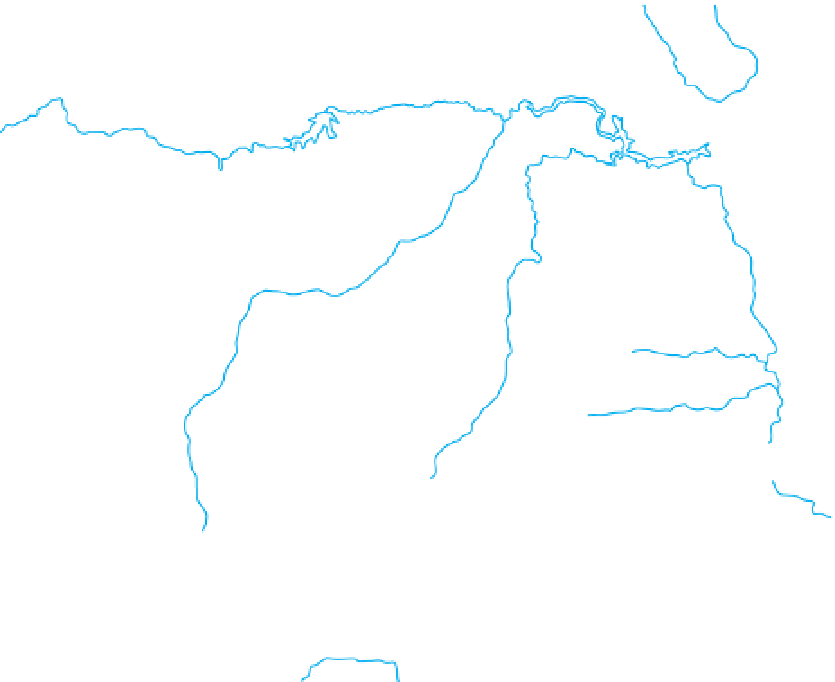Geoscience Reference
In-Depth Information
Brown explored the southern tributaries
of the Missouri River in the Williston Basin
of Montana (
163
) travelling on horseback
and hunting pronghorn for food.
Eventually he set up camp at the head of
Hell Creek where he was immediately
successful in his quest. In July 1902 he
discovered only the second known
specimen of
Tyrannosaurus rex
(he had
also discovered the first in Wyoming in
1900). The new specimen (which was later
designated as the holotype) consisted of a
large portion of the lower jaws, a few skull
bones, parts of both legs, partial feet, most
of the pelvis, a shoulder blade, one upper
arm bone, and some vertebrae and ribs
(Larson and Donnan, 2002). Six years later
in 1908 Brown made his most spectacular
discovery in the Hell Creek Beds, the third
known specimen of
T. r e x
. This specimen
consisted of a nearly complete vertebral
column, pelvis, and rib cage, but best of all
was the beautifully preserved and complete
skull and jaws that can still be seen today on
display at the American Museum of Natural
History in New York.
163
MT
ND
BP
Williston
Lake Sakakawea
HC
Basin
SB
LE
BE
BR
CB
Miles City
Arch
ND
ME
TU
SD
MT
WY
TR
FH
Faith
Black Hills
Rapid City
PI
Fort Union Formation
Hell Creek and Lance
Formations
Fox Hills and Pierre
Formations
N
SD
50 km
NE
50 miles
163 Locality map to show the extent of the Hell Creek Formation outcrop in North America
after Hartman, 2002.



























































































Search WWH ::

Custom Search